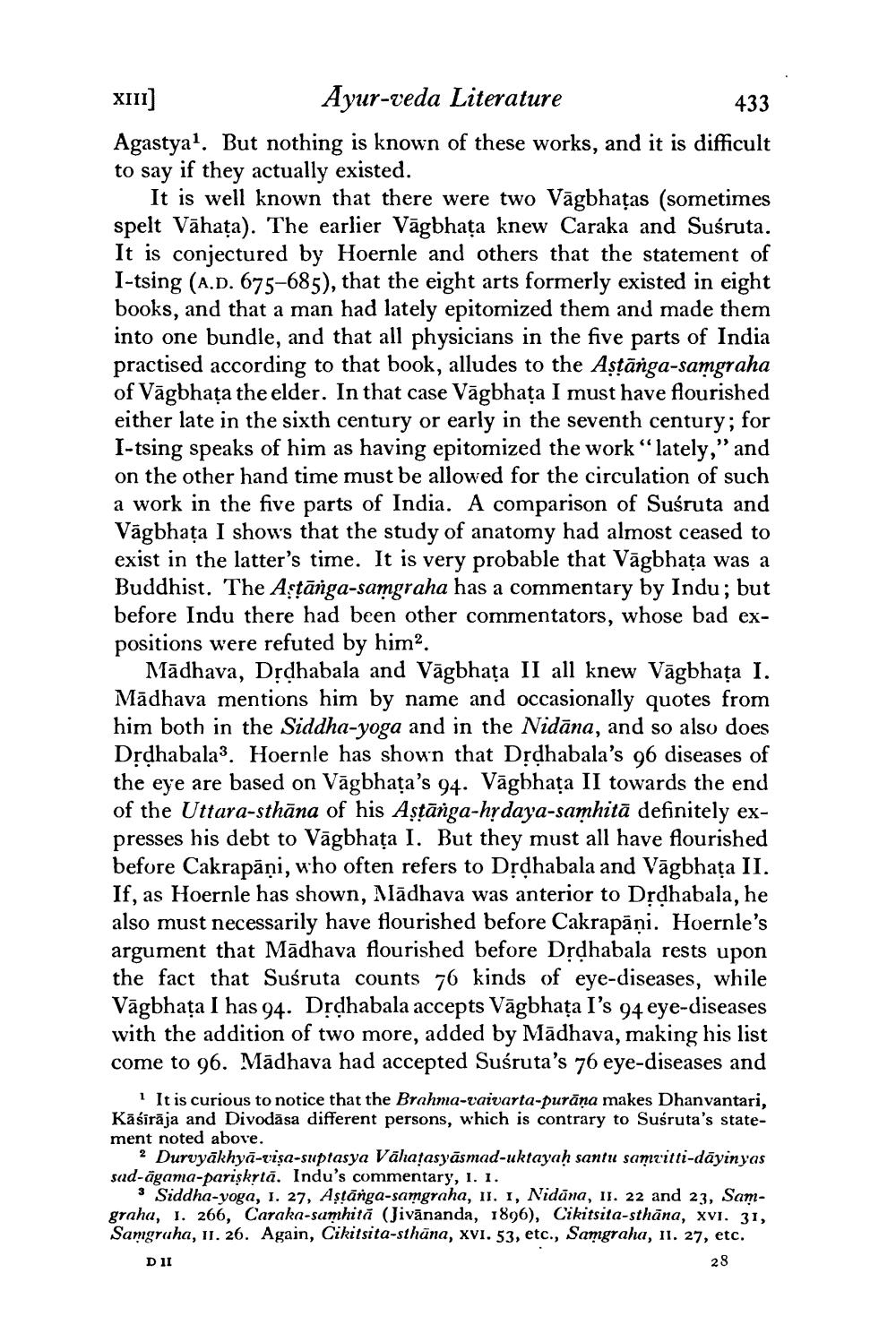________________
XIII]
Ayur-veda Literature
433
Agastya1. But nothing is known of these works, and it is difficult to say if they actually existed.
It is well known that there were two Vagbhatas (sometimes spelt Vahața). The earlier Vagbhața knew Caraka and Suśruta. It is conjectured by Hoernle and others that the statement of I-tsing (A.D. 675-685), that the eight arts formerly existed in eight books, and that a man had lately epitomized them and made them into one bundle, and that all physicians in the five parts of India practised according to that book, alludes to the Aṣṭānga-samgraha of Vagbhața the elder. In that case Vagbhața I must have flourished either late in the sixth century or early in the seventh century; for I-tsing speaks of him as having epitomized the work "lately," and on the other hand time must be allowed for the circulation of such a work in the five parts of India. A comparison of Suśruta and Vägbhața I shows that the study of anatomy had almost ceased to exist in the latter's time. It is very probable that Vagbhata was a Buddhist. The Astanga-samgraha has a commentary by Indu; but before Indu there had been other commentators, whose bad expositions were refuted by him2.
Madhava, Dṛdhabala and Vāgbhața II all knew Vāgbhața I. Madhava mentions him by name and occasionally quotes from him both in the Siddha-yoga and in the Nidāna, and so also does Drdhabala3. Hoernle has shown that Dṛdhabala's 96 diseases of the eye are based on Vagbhata's 94. Vagbhața II towards the end of the Uttara-sthāna of his Aṣṭanga-hr daya-samhita definitely expresses his debt to Vagbhața I. But they must all have flourished before Cakrapāņi, who often refers to Drdhabala and Vagbhața II. If, as Hoernle has shown, Madhava was anterior to Dṛdhabala, he also must necessarily have flourished before Cakrapāņi. Hoernle's argument that Madhava flourished before Drdhabala rests upon the fact that Suśruta counts 76 kinds of eye-diseases, while Vagbhața I has 94. Drdhabala accepts Vāgbhața I's 94 eye-diseases with the addition of two more, added by Madhava, making his list come to 96. Madhava had accepted Suśruta's 76 eye-diseases and
1 It is curious to notice that the Brahma-vaivarta-purāṇa makes Dhanvantari, Kāśīrāja and Divodāsa different persons, which is contrary to Suśruta's statement noted above.
2 Durvyākhyā-viṣa-suptasya Vāhaṭasyāsmad-uktayaḥ santu samvitti-dāyinyas sad-agama-parişkṛtā. Indu's commentary, 1. 1.
3 Siddha-yoga, 1. 27, Astanga-samgraha, 11. 1, Nidāna, 11. 22 and 23, Samgraha, 1. 266, Caraka-samhita (Jivānanda, 1896), Cikitsita-sthāna, XVI. 31, Samgraha, 11. 26. Again, Cikitsita-sthāna, XVI. 53, etc., Samgraha, 11. 27, etc.
D II
28




